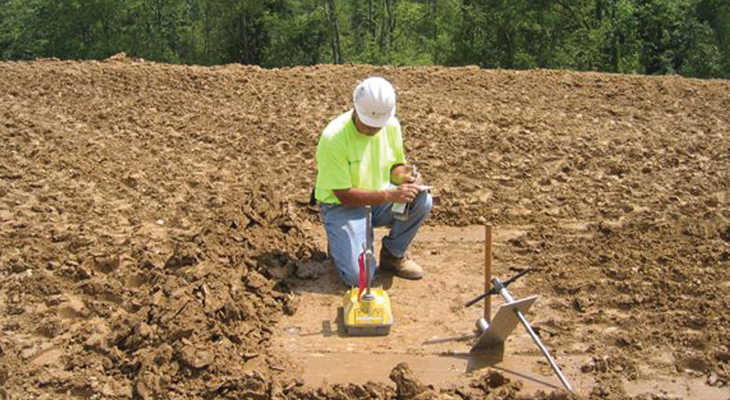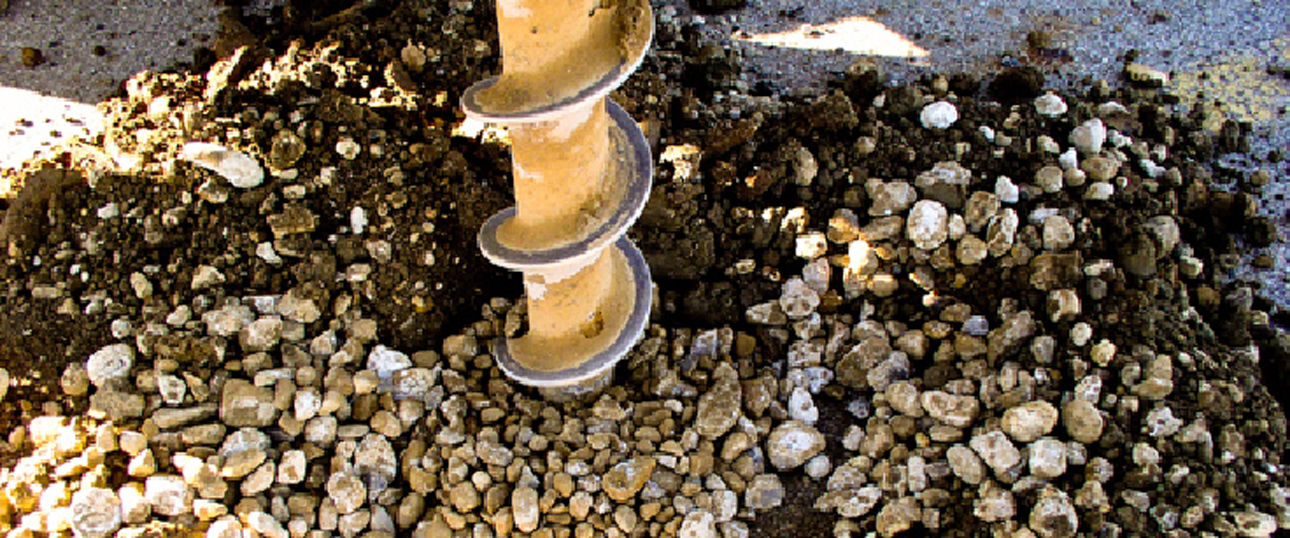Everything You Required to Find Out About Geotechnical Engineering for Your Following Job
Everything You Required to Find Out About Geotechnical Engineering for Your Following Job
Blog Article
A Comprehensive Overview of Geotechnical Design Techniques and Their Impact on Modern Civil Engineering Projects
Geotechnical design functions as the backbone of modern civil engineering, supplying vital techniques that address the intricacies of subsurface problems. The interplay of dirt analysis, foundation design, and cutting-edge modern technologies forms the honesty and sustainability of facilities tasks. As we check out these methodologies, it ends up being clear how crucial they are in mitigating prospective dangers connected with building. The effects of these techniques prolong past mere security; they also affect project performance and ecological considerations, elevating crucial questions regarding future developments in the field. What continues to be to be uncovered is the transformative potential of these technologies on metropolitan development.
Importance of Geotechnical Engineering
Geotechnical engineering serves as a crucial structure for civil design jobs, influencing the security and security of structures. This technique concentrates on the habits of dirt and rock materials, giving vital understandings that direct the style and building procedures. By understanding the communication in between the planet and engineered structures, geotechnical engineers can assess risks connected with ground conditions, such as negotiation, slope stability, and liquefaction.
The importance of geotechnical design prolongs beyond plain structural stability; it plays an essential role in environmental management and sustainability. Correctly carried out geotechnical analyses make sure that tasks reduce their ecological footprint and abide by governing requirements (geotechnical engineer description). Geotechnical engineering is instrumental in site selection, enabling engineers to recognize ideal places for building and construction that minimize potential threats.
In addition, geotechnical engineering cultivates advancement in civil design by progressing techniques for ground renovation, foundation layout, and excavation. The technique's payments are essential in addressing challenges presented by differing soil conditions, therefore assisting in efficient and secure framework growth. Overall, the importance of geotechnical engineering is critical in guaranteeing that civil engineering projects are not only viable yet likewise resistant versus synthetic and all-natural hardships.
Key Strategies in Geotechnical Engineering

Another crucial technique is soil stablizing, which includes modifying soil properties to enhance load-bearing capacity or decrease settlement. Approaches such as adding concrete, lime, or making use of geosynthetics are typically made use of to attain dirt enhancement.
Ground renovation techniques, consisting of vibrant compaction and vibro-replacement, are also vital. These approaches aim to densify soft or loosened dirts, boosting their strength and decreasing liquefaction capacity in seismic areas.
Retaining frameworks, such as sheet heaps and soil nailing, are used to sustain excavations and avoid dirt movement. Furthermore, incline stabilization strategies, including drainage systems and keeping walls, are essential for reducing landslide dangers.

Soil Analysis and Checking Approaches
Effective dirt analysis and screening approaches are vital for understanding the physical and chemical properties of over here soil, which straight affect design decisions. A detailed evaluation of soil attributes is crucial for predicting behavior under numerous loading problems and environmental influences.
Common dirt screening approaches include both field and laboratory methods. Field tests, such as the Standard Penetration Examination (SPT) and Cone Infiltration Examination (CPT), offer prompt understandings into soil stratification, thickness, and toughness. These examinations aid engineers evaluate site problems effectively prior to more considerable research laboratory analyses.
Lab testing approaches, such as Atterberg limits, grain size distribution, and compaction tests, are important for determining dirt plasticity, wetness content, and optimum compaction levels. Progressed strategies like triaxial examinations and consolidated undrained (CU) tests provide beneficial data on shear stamina and effective stress specifications.
Chemical screening, including pH, electrical conductivity, and organic material evaluation, is likewise essential for understanding prospective dirt contamination and its influence on building products. Jointly, these soil analysis and testing methods form the foundation of notified decision-making in geotechnical design, guaranteeing the safety and security and stability of contemporary civil design projects.
Foundation Layout Approaches
Structure style techniques are critical in guaranteeing the security and longevity of structures. These techniques can be categorized right into deep and shallow foundations, each matched to certain dirt conditions and loading circumstances. Shallow structures, such as spread footings and mat structures, are generally used when surface dirts have sufficient bearing ability. They disperse the tons over a bigger area, reducing settlement risks.
On the other hand, deep foundations, consisting of stacks and pierced shafts, are used when surface area soils are poor or weak for sustaining the structure. These structures transfer lots to much deeper, much more secure dirt or rock layers, making them crucial for high-rise buildings and bridges in difficult geotechnical conditions.
Choosing the proper foundation design involves complete geotechnical investigations, consisting of soil composition, bearing ability, and groundwater conditions. Furthermore, designers should take into consideration factors such as negotiation, lateral tons, and possible seismic task to make certain the structure's efficiency gradually.
Ultimately, a well-executed structure design is a crucial element of civil design, directly affecting the security, toughness, and performance of frameworks. about geotechnical engineering. By straightening structure types with site-specific conditions, designers can properly reduce threats connected with foundation failing
Technologies Forming Civil Engineering

Sustainable materials, such as high-performance concrete and recycled accumulations, are likewise obtaining grip, promoting environment-friendly practices while preserving architectural honesty. In addition, advanced geotechnical methods, such as ground improvement and deep mixing techniques, are enhancing the stability of structures in tough dirt conditions.
Furthermore, using drones and remote picking up innovation is improving site checking and checking, giving real-time information that aids in handling construction development and safety and security. The execution of innovative construction approaches, such as premade and modular building and construction, better speeds up job timelines and lowers waste. Jointly, these technologies are not just transforming civil engineering techniques yet also ensuring that modern infrastructure satisfies the demands of a growing worldwide population while attending to environmental problems.
Verdict
In verdict, geotechnical engineering techniques are essential to Read Full Report the success of contemporary civil design projects. By using these methods, engineers can alleviate threats and add to the advancement of durable metropolitan environments, eventually fostering sustainable growth and safety in civil design practices.
Geotechnical engineering serves as the foundation of modern civil design, offering crucial strategies that attend to the complexities of subsurface conditions.Geotechnical design serves as a vital structure for civil engineering projects, affecting the safety and security and stability of structures.In addition, geotechnical design promotes development in civil engineering by advancing techniques for ground enhancement, foundation layout, and excavation. Generally, the significance of geotechnical engineering is extremely important in guaranteeing that civil design projects are not just feasible however also resilient versus all-natural and man-made hardships.
In final thought, geotechnical engineering techniques are important to the success of modern-day civil design tasks.
Report this page